As artificial intelligence (AI) is used to minimize the job of humans. AI-powered tools are reshaping how we create, optimize, and distribute content, opening doors to new possibilities for businesses, marketers, and content creators. This guide will take a deep dive into AI content writing, exploring what it is, how it works, the benefits and challenges it brings, and how to use it effectively. By the end, you’ll understand why AI content writing is an essential tool in today’s digital landscape.
Table of Contents
1. What is AI Content Writing?
AI content writing refers to the use of artificial intelligence to generate written content automatically or with limited human assistance. Using natural language processing (NLP) and machine learning algorithms, AI content tools analyze large data sets and use this knowledge to create text that mimics human writing. From blogs and articles to social media posts, product descriptions, and emails, AI can produce nearly any type of content.
AI content writing isn’t just about replacing human writers; rather, it aims to enhance productivity, streamline processes, and provide more personalized, data-driven content.
2. How AI Content Writing Works
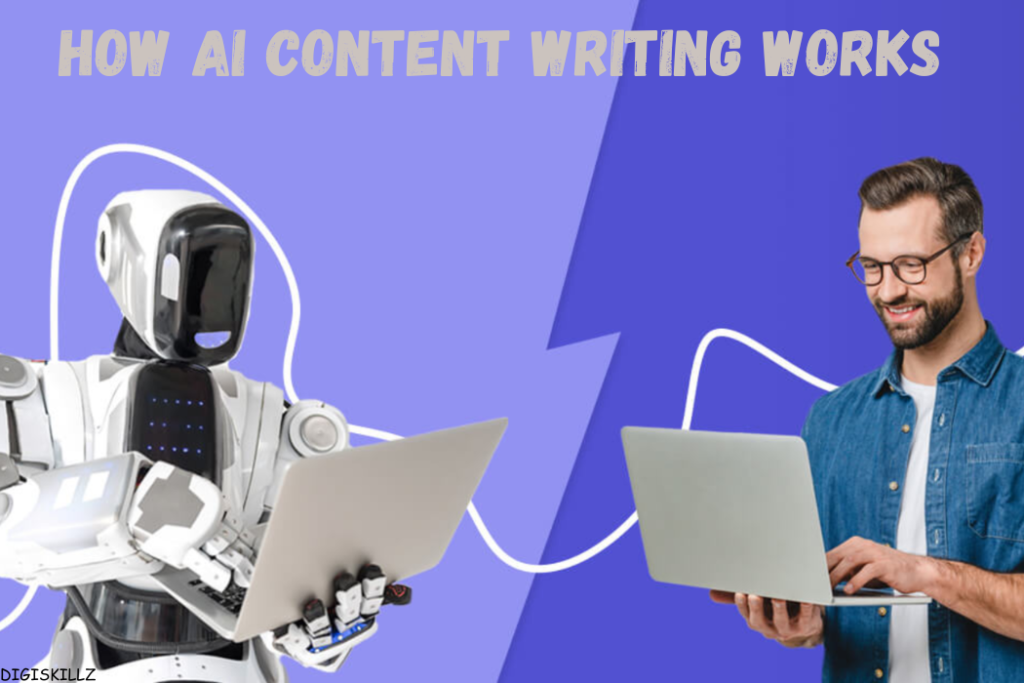
AI Content Writing relies on natural language processing (NLP) and machine learning to create text. Here’s a quick look at how these technologies function in the context of content generation:
- Data Collection and Analysis: AI tools are trained on vast datasets, including books, articles, and web content. This data helps AI understand the structure, tone, grammar, and nuances of human language.
- Text Generation: Once trained, the AI uses patterns learned from the data to generate content based on prompts or specific instructions.
- Refinement and Editing: Many AI content tools come with grammar checks, style adjustments, and options for tone and structure. This allows users to fine-tune the output for brand voice, readability, and context.
By using deep learning algorithms, AI models are constantly improving. With each new dataset and user interaction, they become better at generating high-quality, relevant content.
3. Benefits of AI Content Writing
They offers several benefits that are transforming how brands approach content creation:
a. Time Efficiency
AI can produce thousands of words in minutes, allowing for faster content creation. This efficiency is ideal for businesses needing high-volume output without sacrificing quality.
b. Cost Savings
By automating repetitive content tasks, AI can reduce the need for large content teams, resulting in lower overall costs. Businesses can focus their budgets on strategic initiatives rather than routine writing tasks.
c. Enhanced Personalization
AI tools can analyze user data to create content tailored to individual needs and preferences. Personalization is crucial in modern marketing, and AI helps create a unique experience for each reader, enhancing engagement and conversion.
d. Improved SEO Optimization
AI-driven SEO tools suggest keywords, analyze competitor content, and help with on-page optimization, making it easier to rank in search engines. By integrating SEO best practices into content from the start, AI tools can help boost organic traffic.
e. Consistency in Quality
For brands that need consistent quality across multiple channels, AI provides a scalable way to maintain standards. AI tools can ensure brand voice consistency and a steady level of quality, even with high output demands.
4. challenges and Limitations of AI Content Writing
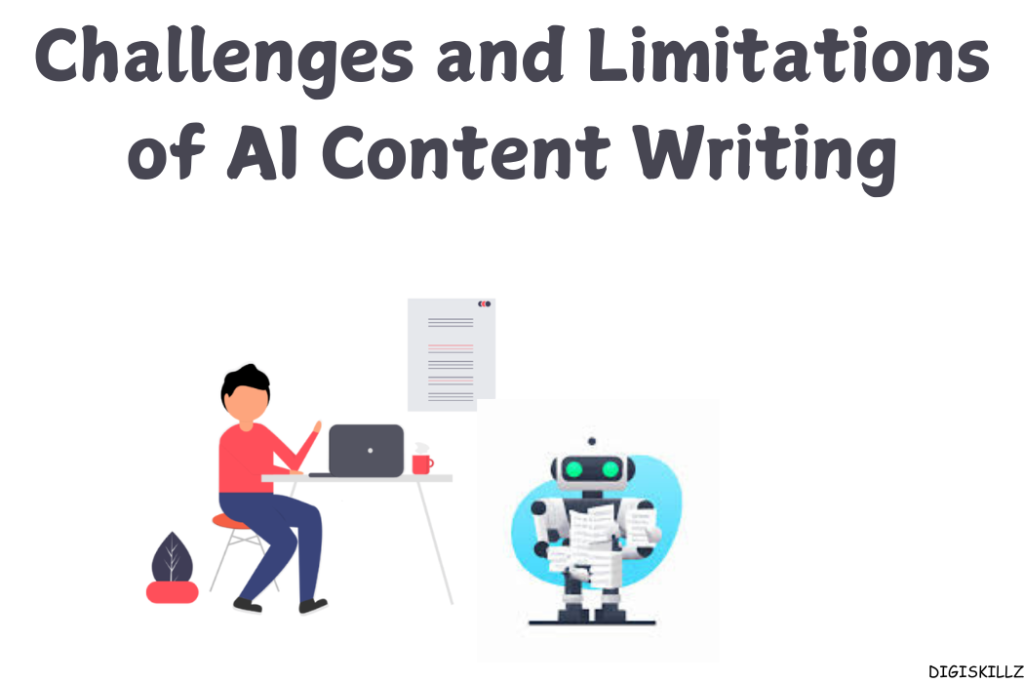
a. Limited Creativity and Originality
AI-generated content can sometimes feel formulaic. It struggles with the creative, emotional, and complex nuances that human writers bring to the table. For more subjective or abstract topics, human input is often essential.
b. Risk of Plagiarism
Since AI learns from existing content, there’s a risk of inadvertently producing plagiarized text. Content creators must review AI output for originality, especially in industries where unique insights and originality are crucial.
c. Dependence on Quality Data
The quality of AI-generated content depends on the data it was trained on. If an AI model learns from biased or low-quality data, it may produce biased or subpar content, affecting brand credibility.
d. Ethical Concerns
Using AI to generate content raises questions about transparency and ethics. If readers don’t know they’re reading AI-generated text, it can impact trust. Brands must be transparent about using AI where it matters.
5. Effective Applications of AI Content Writing
AI content writing can be applied to a wide range of tasks, making it versatile and valuable across industries. Here are some common applications:
- Blog Writing and Article Creation: AI can quickly produce well-structured blog drafts, saving writers time on research and initial composition.
- Social Media Posts: AI tools can create engaging captions and posts for social media, with the ability to tailor messaging to different platforms.
- Product Descriptions: E-commerce sites use AI to generate accurate, consistent, and SEO-optimized product descriptions for thousands of items.
- Email Marketing: AI can generate email subject lines, greetings, and call-to-action phrases, enabling marketers to create compelling emails faster.
- Customer Support Content: Automated chat responses and FAQs are often powered by AI, helping companies respond quickly to customer inquiries.
6. Best AI Tools for Content Writing

Many AI tools can assist with content writing, each offering unique features to help users generate quality text. Here are some top options:
- Jasper: Known for its versatility, Jasper (formerly Jarvis) offers various templates for blogs, emails, and social media posts. It includes tone-of-voice customization and SEO guidance.
- ChatGPT: Developed by OpenAI, ChatGPT can create detailed, conversational content on a wide range of topics. It’s a flexible tool that excels in providing informative, engaging content.
- Copy.ai: Copy.ai is designed for marketing content and excels at generating social media captions, ads, and email templates. It’s user-friendly and offers various customization options.
- Grammarly: While primarily a grammar tool, Grammarly’s AI-based suggestions for clarity, engagement, and style are invaluable for polishing content.
- Writesonic: Writesonic is ideal for blog creation, SEO copywriting, and even video scriptwriting, providing diverse templates and features for different writing needs.
7. How to Use AI Content Writing for Maximum Impact
To make the most of AI content writing, follow these best practices:
a. Start with Clear, Detailed Prompts
The quality of AI-generated content often depends on the prompt. Provide specific details about the tone, style, and topic to get the most accurate and relevant output.
b. Review and Edit Content
While AI can create drafts, it’s important to review, edit, and add human touches to the content. Ensure the text aligns with brand values, is factually accurate, and avoids redundancy.
c. Combine AI with Human Creativity
AI works best as an assistant rather than a replacement. Use it to generate ideas, perform research, or create outlines, but rely on human creativity for final touches and insights.
d. Track Performance and Improve
Analyze how AI-generated content performs in terms of engagement, SEO, and conversions. Use these insights to refine your prompts and strategies, ensuring continuous improvement.
e. Stay Transparent and Ethical
If AI-generated content is used in ways that affect the audience’s understanding (e.g., for news or sensitive information), be transparent about it. This builds trust and avoids ethical issues.
8. The Future of AI Content Writing
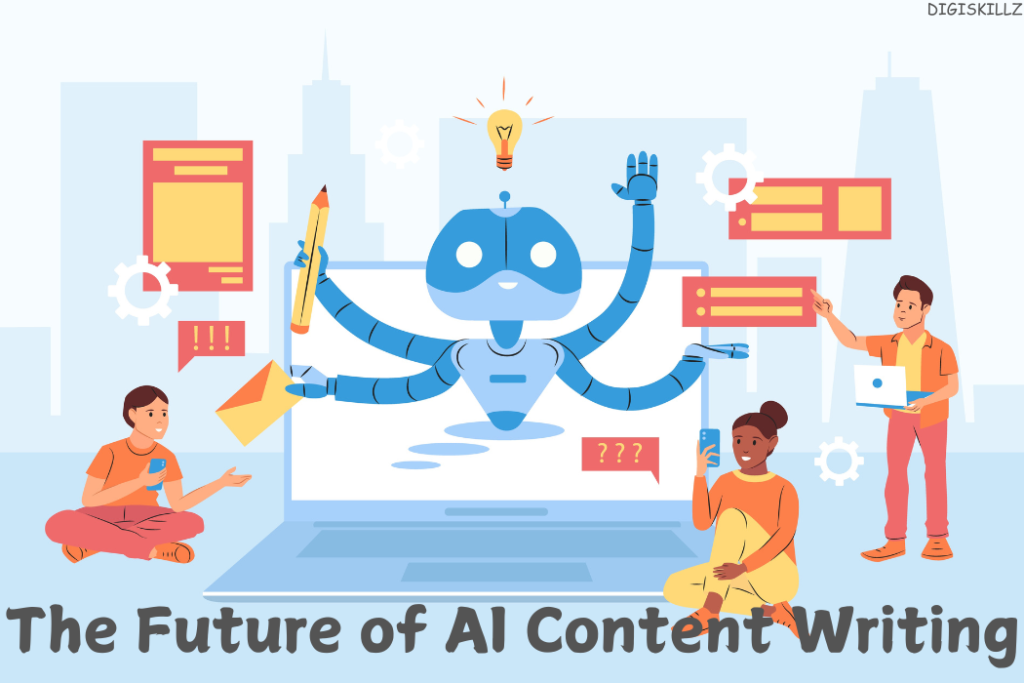
The future of AI content writing is promising, with innovations on the horizon that will push the boundaries of what AI can do. Here are some trends to watch:
- More Refined Language Models: Future AI models will likely handle complex language tasks more accurately, improving quality and making content creation even faster.
- Enhanced Personalization: AI will increasingly tailor content for individual readers, thanks to deeper data integration and audience insights.
- Improved Creativity: Although AI creativity is limited now, advances in machine learning may allow AI to generate more creative, nuanced, and insightful content over time.
- Seamless Collaboration with Human Writers: As AI becomes more refined, its role in assisting human writers will grow, leading to smoother collaboration and more effective content strategies.
Applications of AI Content Writing
AI content writing has a broad range of applications across industries, providing solutions for creative, technical, and promotional needs. Here are some key areas where AI content writing is widely used:
a. Digital Marketing
- SEO-Optimized Content: Creating blog posts, articles, and website content optimized with keywords for better search engine rankings.
- Ad Copywriting: Generating attention-grabbing headlines and descriptions for digital ads.
- Social Media Content: Writing engaging posts, captions, and hashtag suggestions tailored to platforms like Instagram, Twitter, and LinkedIn.
b. E-Commerce
- Product Descriptions: Producing detailed and persuasive product copy to drive sales.
- Customer Reviews and FAQs: Generating automated responses for customer questions or creating review-style content.
c. Email Marketing
- Campaigns: Writing personalized, high-converting email content.
- Subject Lines: Generating compelling and click-worthy subject lines.
d. Content Creation
- Blog Writing: Producing articles on diverse topics, from tutorials to thought leadership.
- News Summaries: Condensing long articles into concise summaries for newsletters or apps.
- Creative Writing: Assisting with storytelling, poetry, or even screenplay drafts.
e. Technical Writing
- User Manuals: Drafting instructions and guides for software, hardware, or other technical products.
- Reports: Automating the creation of business reports, proposals, and whitepapers.
f. Educational Content
- Lesson Plans: Creating tailored learning materials for students.
- Study Guides: Summarizing educational texts or generating quizzes.
- E-Learning: Writing interactive scripts for courses and online training modules.
g. Media and Entertainment
- Scriptwriting: Assisting with scripts for videos, podcasts, or video games.
- Captioning and Subtitles: Generating accurate captions for videos.
- Lyrics and Poetry: Helping with artistic expression in music and verse.
h. Customer Support
- Chatbot Responses: Writing conversational replies for AI-driven customer service chatbots.
- Knowledge Bases: Creating help articles for self-service support systems.
i. Translation and Localization
- Multilingual Content: Translating content into various languages while maintaining context.
- Cultural Adaptation: Localizing text to fit cultural nuances and preferences.
j. Branding and Personalization
- Brand Voice Development: Generating consistent content that aligns with a brand’s tone and personality.
- Customer Personalization: Creating tailored messages based on user behavior and preferences.
How to Use ai content writing Effectively
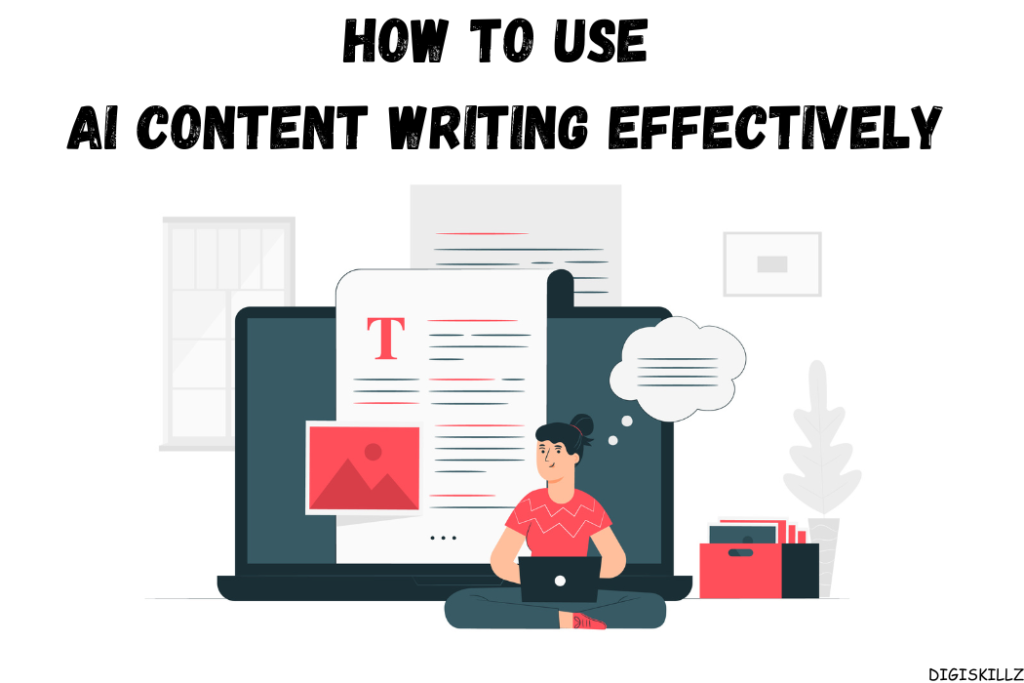
Using AI effectively in content writing requires strategy, tools, and a clear understanding of how to leverage the technology for your goals. Here’s a step-by-step guide to help you maximize the potential of AI in content writing:
a. Understand Your Goals
- Define Objectives: Identify what you want to achieve—blog posts, SEO content, marketing copy, product descriptions, etc.
- Audience Focus: Understand your target audience, their needs, and the tone of voice they prefer.
b. Choose the Right Tools
- AI Writing Assistants: Tools like ChatGPT, Jasper, Writesonic, or Copy.ai can help generate content, refine drafts, or brainstorm ideas.
- SEO Tools: Pair AI with tools like SEMrush, Ahrefs, or Surfer SEO to optimize your content for search engines.
- Grammar and Style Checkers: Use Grammarly or ProWritingAid to polish your drafts.
c. Use AI for Different Stages of Writing
- Brainstorming: Generate ideas, outlines, or angles for your topic.
- Example: “Generate 10 blog topics about sustainable living.”
- Drafting: Let AI create initial drafts to save time.
- Example: “Write a 500-word article on the benefits of yoga for mental health.”
- Refinement: Use AI to improve clarity, rewrite sentences, or enhance tone.
- Example: “Rewrite this paragraph in a professional tone.”
- Editing: Ask AI to proofread or suggest improvements.
d. Provide Clear Prompts
AI performs best when given clear, detailed instructions.
- Include context, style, and structure preferences in your prompts.
- Instead of: “Write about AI,” say: “Write a 600-word blog post explaining how AI helps small businesses, focusing on productivity and cost reduction.”
e. Combine Human Creativity with AI
- Personalization: Add personal anecdotes, unique insights, or industry knowledge to distinguish your content.
- Fact-Checking: Always verify AI-generated facts, statistics, or claims.
- Final Edits: Ensure the content aligns with your brand voice and quality standards.
f. Optimize for SEO
- Keywords: Use AI to incorporate target keywords naturally.
- Meta Descriptions: Generate compelling summaries for search engines.
- Headings and Subheadings: Use AI to suggest structured headings for better readability.
g. Stay Ethical
- Avoid Plagiarism: Use AI responsibly and check for originality with plagiarism detection tools.
- Disclose AI Use: Be transparent about using AI if required by your audience or platform.
h. Evaluate Performance
- Use analytics tools (e.g., Google Analytics) to measure how AI-generated content performs in terms of engagement, clicks, and conversions.
- Refine your strategy based on the data.
i. Regularly Update Skills
- Stay updated about the latest AI tools and features.
- Experiment with new ways to use AI in your writing workflow.
By blending AI’s efficiency with human creativity and judgment, you can create high-quality, engaging, and impactful content while saving time and effort.
Conclusion: Embracing AI Content Writing as Part of Your Strategy
It is a valuable asset in today’s content-driven world. From boosting productivity and lowering costs to enhancing personalization and SEO, AI tools bring many benefits to content creation. However, success with AI content writing comes from a balanced approach that combines AI efficiency with human creativity and oversight.
By embracing AI in a strategic, ethical, and creative way, businesses and content creators can leverage this technology to communicate more effectively, reach a larger audience, and stay competitive in an ever-evolving digital landscape.


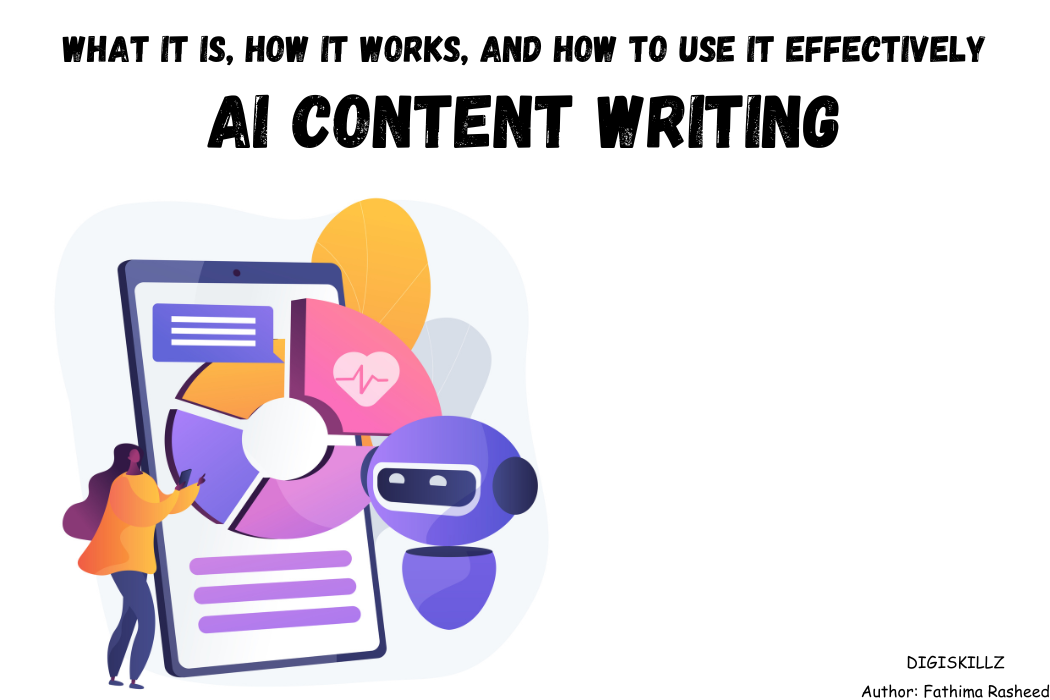
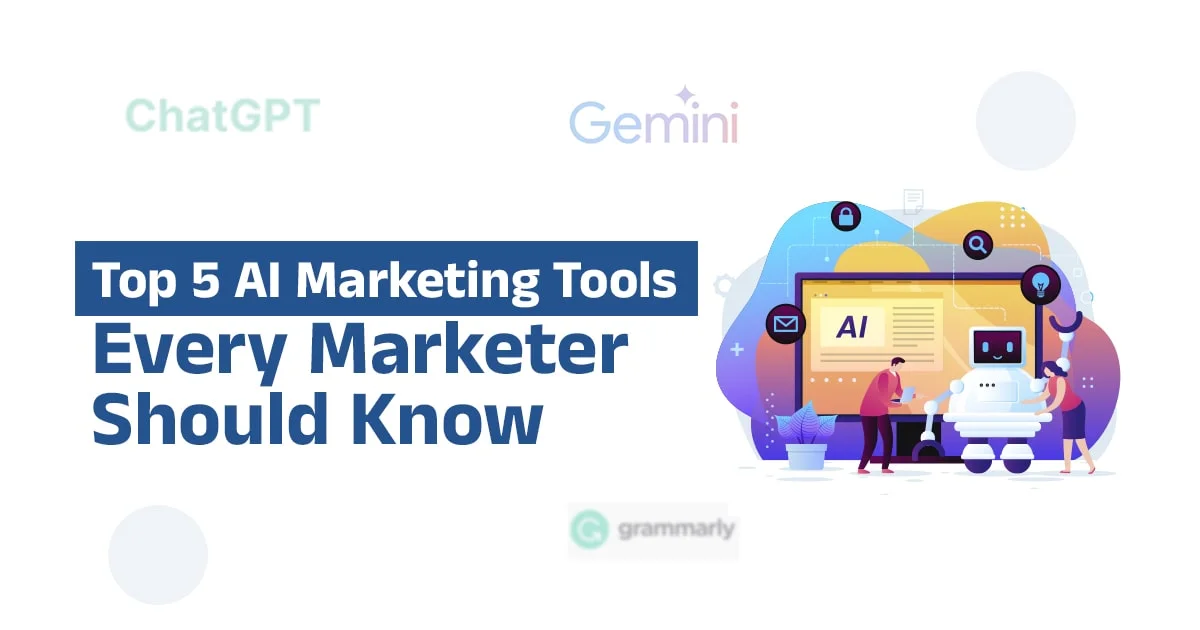

Leave A Comment